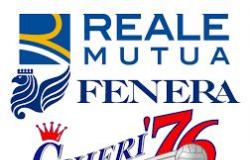
Despite the explosive effects deriving from the changes made to the regulation of the options for the transfer of credit and the discount on the invoice, referred to inarticle 1, paragraph 5, DL 39/2024the scope of application of the new rules it doesn’t seem like it, in the absence of appropriate clarifications, free from insecuritiesso much from the point of view objective as well as subjective.
It is worth remembering that, for the news, for the purposes of the practicability of the aforementioned options, the simple time requirement of presentation is no longer sufficientdated before 17.2.2023, of the CILA and the condominium resolution (or the application for the acquisition of the qualification for demo-reconstruction) for superbonus interventionsor the qualifying qualification for no-superbonus interventionsif required by law (otherwise the start of works or the stipulation of agreements for the supply of goods or services on a date prior to 17.2.2023 will apply, as resulting from advance payments or from a declaration in lieu of the affidavit); but the additional complex requirement is now also requiredboth temporal and substantial, therefore as of 30.3.2024 (date of entry into force of Legislative Decree 39/2024) must include at least one expensedocumented by invoice, for “work already carried out”.
Now, speaking of the legitimate uncertainties that may hover, regarding the definition relevant here of “work already done“, it is worth underlining that many economic operators, in the need to respect the time profile of the new requirement which expires imminently, on they regularized on Friday 29.3.2024with the issuing of specific invoices, the “site preparation” operations already implementedin the belief that the reality of the intervention described was suitable for consolidationtogether with the immediate payment of the invoices themselves, also i substantial profiles of the new condition.
Lacking instructions ad hoc by the Revenue Agency, to understand whether these operations can be considered functional for the purposes in question, it can be useful recall the precedents of tax practice who have already closely considered, if not the textual concept of “construction site setup”, at least the very similar concept of “starting the construction site”.
We refer, in particular, to the consolidated interpretative principle endorsed by paragraph 10 of the circular no. 12/E/2007from paragraph 3.9 from circular no. 12/E/2010 and paragraph 3.3.4 of circular no. 18/E/2013to determine the VAT regime applicable to the sale of properties undergoing renovation; principle whereby, for tax purposes, i buildings can be defined as being under renovation when “construction has begun” (since, in this regard, the simple request for administrative authorizations to the execution of the intervention). In light of these explanations, reiterated several times by the tax authorities, it therefore seems sustainable that the starting point of the construction site, which is relevant in the eyes of the tax authorities, can and must coincide with the construction of the construction site itself: the relative expenditure can then be considered fully attributable to the concept of “work already done”, with consequent salvation, for the purposes of the transfer and discount options, of the construction operations relating to the construction sites in question.
Another uncertainty, regarding the scope of application of the rule under review, could concern, this time, the subjective level and, therefore, the type of taxpayers to which the rule itself is addressed. Notice how thearticle 1, paragraph 5, DL 39/2024provides, verbatim, a main objective requirement – incurring expenses for “work already carried out” (before March 30) – e a secondary prediction of a serving nature with respect to the first: the exclusive demonstrability of the above through the presentation of a specific invoice. Now, if paragraph 5 can find full application in relation to those taxpayers whoby their nature, have the possibility of receive invoices for work performed – and therefore demonstrate, in this only permitted way, the reality of the works – However, the restrictive forecast may be doubtful at the point of testing the interventions can apply to those subjects which, in any case, cannot document the incurrence of costs on the reference date through third-party invoices. Think, for example, of companies that carry out the work themselveson its own properties, to which the accrual principle and not cash principle, for the purposes of traceability of the expenses to the relevant tax year. If the reading is valid, therefore the criterion for confirming the transfer and discount options is the actual incurring of costs for work carried out before 30.3.2024and the documentation via invoice is a mere means of proof of this circumstance, for companies that carry out works on its own properties, the financial administration should clarify in which alternative ways it can demonstrate that it has borne costs for work in progressbefore the aforementioned date.




